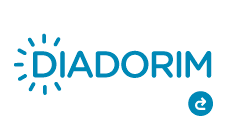RELAÇÕES ENTRE ESTILO DE VIDA E PADRÃO DE SONO DURANTE A PANDEMIA DA COVID-19
Resumo
A qualidade do sono é considerada um importante indicador de saúde. Verificamos a influência do sono e do estado de ansiedade em 93 mulheres (>30 anos), entre julho e agosto de 2020. Analisamos os inventários Sociocultural, Cronotipos, PSQI, IDATE-T/E, BDI e BHS respondidos corretamente. Observou-se uma queda na quantidade e qualidade de sono. No BDI (n=75), 69% apresentaram escore mínimo para depressão, 12% moderado e 3%, grave. Cruzando esses dados com a faixa etária, 76% das mulheres com escore mínimo estão acima de 60 anos e 7% com escore grave, entre 50 e 59 anos. Cruzando BDI e Cronotipo: 78% das matutinas tiveram classificação mínima para depressão. 17% das moderadamente vespertinas e 5% das intermediárias, apontaram tendência grave para depressão. No BHS (n=83), 76%, 18%, 4% e 2% expressam, respectivamente, expectativa negativa mínima, leve, moderada e grave a respeito do futuro imediato e remoto. Cruzando IDATE com PSQI, 78% com distúrbio do sono se encontram em uma condição média de ansiedade, enquanto estado e traço. 22% apresentam alto estado de ansiedade, enquanto estado e 11% traço. Pode-se correlacionar fatores externos como causas das diferenças dos padrões de sono. Ações que levem ao autoconhecimento e autocuidado podem contribuir para o reconhecimento dos primeiros sinais de alterações do sono e do humor, permitindo melhor controle e acompanhamento das situações reais de conflito externo.
Downloads
Referências
CIOTTI, M.; CICCOZZI, M.; TERRINONI, A.; et al. The COVID-19 pandemic. Critical Reviews in Clinical Laboratory Sciences, v. 57, n. 6, p. 365–388, 2020. Disponível em: https://doi.org/10.1080/10408363.2020.1783198. Acesso em: 07 jun. 2021.
SOUZA, C. D. F. DE; PAIVA, J. P. S. DE; LEAL, T. C.; SILVA, L. F. DA; SANTOS, L. G. Evolução espaçotemporal da letalidade por COVID-19 no Brasil , 2020. Jornal Brasileiro de Pneumologia, v. 46, n. 4, p. 1–3, 2020. Disponível em: https://doi.org/10.36416/1806-3756/e20200208. Acesso em: 07 jun. 2021.
BEZERRA, Anselmo César Vasconcelos et al. Fatores associados ao comportamento da população durante o isolamento social na pandemia de COVID-19. Ciência & Saúde Coletiva, v. 25, p. 2411-2421, 2020. Disponível em: https://doi.org/10.1590/1413-81232020256.1.10792020. Acesso em: 11 jun. 2021.
XIE, Xinyan et al. Mental health status among children in home confinement during the coronavirus disease 2019 outbreak in Hubei Province, China. JAMA pediatrics, 2020. Disponível em: https://doi.org/10.1001/jamapediatrics.2020.1619. Acesso em: 11 jun. 2021.
RIBEIRO, Cairon Rodrigo Faria; SILVA, Yasmin Maria Garcia Prata da; OLIVEIRA, Sandra Márcia Carvalho de. O impacto da qualidade do sono na formação médica. Revista Brasileira de Educação Médica. Rio Branco, p. 8-14. jan. 2014. Disponível em: https://www.sbcm.org.br/ojs3/index.php/rsbcm/article/view/45. Acesso em: 18 jun. 2021.
TUFIK, Sergio. Medicina e Biologia do Sono. Barueri: Manole, 2008. P. 483.
MELLO, BJ; MELLO, ST; VIDOTTI, AP; MELLO, JM. Cronotipo e qualidade do sono de acadêmicos do primeiro ano do curso de medicina da cidade de Maringá-PR. Revista Saúde e Pesquisa. V. 11 (2), p.287-292, 2018. Disponível em: http://dx.doi.org/10.177651/1983-1870.2018v11n2p287-292. Acesso em: 18 jun. 2021.
KHATONY, Alireza et al. International nursing: a study of sleep quality among nurses and its correlation with cognitive factors. Nursing administration quarterly, v. 44, n. 1, p. E1-E10, 2020. Disponível em: https://doi.org/10.1097/naq.0000000000000397. Acesso em: 23 jun. 2021.
CELLINI, Nicola et al. Changes in sleep pattern, sense of time and digital media use during COVID‐19 lockdown in Italy. Journal of Sleep Research, p. e13074, 2020. Disponível em: https://psycnet.apa.org/doi/10.1111/jsr.13074. Acesso em: 24 jun. 2021.
XIAO, Han et al. Social capital and sleep quality in individuals who self-isolated for 14 days during the coronavirus disease 2019 (COVID-19) outbreak in January 2020 in China. Medical science monitor: international medical journal of experimental and clinical research, v. 26, p. e923921-1, 2020. Disponível em: https://dx.doi.org/10.12659%2FMSM.923921. Acesso em: 24 jun. 2021.
MATHUR; GRAHAM-ENGELAND,; SLAVISH; SMYTH; LIPTON; KATZ; SLIWINSKI. Recalled early life adversity and pain: the role of mood, sleep, optimism, and control. Journal of behavioral medicine. 1573-3521. Vol. 41:(4), 2018. Disponível em: https://doi.org/10.1007/s10865-018-9917-8. Acesso em: 24 jun. 2021.
MAJUMDAR, Piya; BISWAS, Ankita; SAHU, Subhashis. COVID-19 pandemic and lockdown: cause of sleep disruption, depression, somatic pain, and increased screen exposure of office workers and students of India. Chronobiology International, v. 37, n. 8, p. 1191-1200, 2020. Disponível em: https://doi.org/10.1080/07420528.2020.1786107. Acesso em: 18 jun. 2021.
CHRISTENSEN, Matthew A. et al. Direct measurements of smartphone screen-time: relationships with demographics and sleep. PloS one, v. 11, n. 11, p. e0165331, 2016. Disponível em: https://doi.org/10.1371/journal.pone.0165331. Acesso em: 18 jun. 2021.
VALLANCE, Jeff K. et al. Associations of overall sedentary time and screen time with sleep vetteoutcomes. American journal of health behavior, v. 39, n. 1, p. 62-67, 2015. Disponível em: https://doi.org/10.5993/AJHB.39.1.7. Acesso em: 24 jun. 2021.
FISCHER, Dorothee et al. Chronotypes in the US–influence of age and sex. PloS one, v. 12, n. 6, p. e0178782, 2017. Disponível em: https://doi.org/10.1371/journal.pone.0178782. Acesso em: 07 jul. 2021.
SILVA, Flavia Rodrigues da et al. Does the compromised sleep and circadian disruption of night and shiftworkers make them highly vulnerable to 2019 coronavirus disease (COVID-19)?. Chronobiology international, v. 37, n. 5, p. 607-617, 2020. Disponível em: https://doi.org/10.1080/07420528.2020.1756841. Acesso em: 07 jul. 2021.
VETTER, Céline et al. Prospective study of chronotype and incident depression among middle-and older-aged women in the Nurses’ Health Study II. Journal of psychiatric research, v. 103, p. 156-160, 2018. Disponível em: https://doi.org/10.1016/j.jpsychires.2018.05.022. Acesso em: 14 jul. 2021.
KILANI, Hashem A. et al. Healthy lifestyle behaviors are major predictors of mental wellbeing during COVID-19 pandemic confinement: A study on adult Arabs in higher educational institutions. Plos one, v. 15, n. 12, p. e0243524, 2020. Disponível em: https://doi.org/10.1371/journal.pone.0243524. Acesso em: 14 jul. 2021.
LUHMANN, Maike; HAWKLEY, Louise C. Age differences in loneliness from late adolescence to oldest old age. Developmental psychology, v. 52, n. 6, p. 943, 2016. Disponível em: https://psycnet.apa.org/doi/10.1037/dev0000117. Acesso em: 14 jul. 2021.
RICO-URIBE, Laura Alejandra et al. Association of loneliness with all-cause mortality: A meta-analysis. PloS one, v. 13, n. 1, p. e0190033, 2018. Disponível em: https://doi.org/10.1371/journal.pone.0190033. Acesso em: 14 jul. 2021.
HUANG, Yeen; ZHAO, Ning. Generalized anxiety disorder, depressive symptoms and sleep quality during COVID-19 outbreak in China: a web-based cross-sectional survey. Psychiatry research, v. 288, p. 112954, 2020. Disponível em: https://doi.org/10.1016/j.psychres.2020.112954. Acesso em: 14 jul. 2021.
VAN DE LANGENBERG, Daniella et al. Diet, physical activity, and daylight exposure patterns in night-shift workers and day workers. Annals of work exposures and health, v. 63, n. 1, p. 9-21, 2019. Disponível em: https://doi.org/10.1093/annweh/wxy097. Acesso em: 28 jul. 2021.
SCHAEFER, Carolin; KUNZ, Dieter; BES, Frederik. Melatonin effects in REM sleep behavior disorder associated with obstructive sleep apnea syndrome: a case series. Current Alzheimer Research, v. 14, n. 10, p. 1084-1089, 2017. Disponível em: https://doi.org/10.2174/1567205014666170523094938. Acesso em: 28 jul. 2021.
VIEIRA, Henrique Corrêa; CASTRO, Aline Eggres de; SCHUCH JÚNIOR, Vitor Francisco. O uso de questionários via e-mail em pesquisas acadêmicas sob a ótica dos respondentes. XIII SEMEAD Seminários em administração, v. 17, n. 1, p. 01-13, 2010. Disponível em: http://sistema.semead.com.br/13semead/resultado/an_resumo.asp?cod_trabalho=612. Acesso em: 09 ago. 2021.
DECLARAÇÃO DE ORIGINALIDADE E DIREITOS AUTORAIS
Declaro que o presente artigo é original, não tendo sido submetido à publicação em qualquer outro periódico nacional ou internacional, quer seja em parte ou em sua totalidade.
Os direitos autorais pertencem exclusivamente aos autores. Os direitos de licenciamento utilizados pelo periódico é a licença Creative Commons Attribution 4.0 (CC BY ): são permitidos o acompartilhamento (cópia e distribuição do material em qualqer meio ou formato) e adaptação (remix, transformação e criação de material a partir do conteúdo assim licenciado para quaisquer fins, inclusive comerciais.

Recomenda-se a leitura desse link para maiores informações sobre o tema: fornecimento de créditos e referências de forma correta, entre outros detalhes cruciais para uso adequado do material licenciado.

















